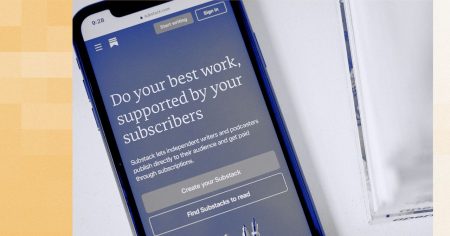Piyush Singh, Founder and CEO of Webllisto Technologies, No Borders Technologies, Expert in Metaverse, AI and Blockchain Solutions.
The digital divide is a major issue in the modern world. It impacts billions of lives. So, what are we doing to address this divide?
This divide or gap exists because of rapidly advancing technology, and I think we can tackle it with better, more inclusive technology—namely, metaverse technology. Metaverse is more than 2022’s biggest buzzword. The underlying technology can bring people together and provide the necessary tools for them to flourish.
I’ve been an advocate of technology being used for the greater good for a long time. Starting as a software engineer and currently at the helm of multiple Web3 projects, I’ve witnessed the potential of metaverse technology firsthand. I believe that metaverse technology could be the key to bridging the digital gap, and I am working to steer the technology in that direction.
What is the digital divide?
Think of the digital divide as a gap between people and technology. As Jim Sevier put it in his superb TedX Talk, technology is like a train, and we’re on the platform. We need to jump over the gap and get on the train. But the gap is getting bigger. Some can still hop on the tech train. But many can’t.
One thing, however, is certain—if we don’t do anything about the growing gap, many people will be left in the technological dark age. The gap is different for everyone. Here’s how.
1. Access gap: The first issue is a lack of access, often because internet access is too expensive. For example, people living outside mega cities often don’t have the proper resources to access the internet affordably. While many regions in the world don’t have even that limited access. There are some grass-roots movements, as well as global movements, working to change this.
2. Usability gap: Not everyone has the same level of technical knowledge. Those lucky enough can catch up with the rapidly changing tech landscape. But many can’t. Even with proper internet coverage, many people will be left behind because they don’t know how to use the information or resources that would help them in the new digital world.
What are the consequences of the digital divide?
The digital divide isn’t a new concept. But the divide has gotten more prominent with newer technologies like AI. Even traditionally educated people are struggling to catch up. And this rapidly-increasing gap can have long-lasting impacts on our society—and the world as a whole.
Many economies have shifted from being labor-intensive to tech-driven. If a large population has restricted access to the latest tech—whether due to limited internet or understanding of the technology—they could face economic repercussions.
Additionally, today’s education relies heavily on technology. Online classes have made it easier for students and teachers to interact. For many students, however, this type of education is beyond reach—which leads to an educational gap.
How can tech companies help address the usability gap?
I want to focus more on the second gap type—the usability gap—and how the private sector can step in and do what it can to bridge the usability gap.
One way to address the gap is by investing in digital training programs. For example, these programs can be geared toward marginalized communities. People often have usability barriers because they don’t have the required skills to understand and use the technology. Programs made for this can help shrink the gap and bring more people aboard the technology train. These programs could help the communities most affected by the digital divide.
Besides educational programs, companies can also invest in user-friendly technology—with the metaverse being a prime example. I think technology usability itself has to be reinvented. Not everyone can use the overly complicated devices that make up much of our daily lives. Investing in newer, simpler technologies can pave the path for a more inclusive future—no matter the educational background.
That’s where the metaverse—and VR technology specifically—takes the spotlight. The metaverse doesn’t require complex commands or understanding to be accessible. Human gestures that have been the norm for millennia are enough to perform any task in the metaverse. It could dissolve so many barriers and bring everyone up to speed so they can utilize the technology to their advantage. So making metaverse technology accessible is essential.
Moreover, its usage shouldn’t be limited. We can’t afford this technology to be confined to a boxed vision. Instead, I suggest tech companies focus on making metaverse and VR technology adaptable so everyone can use it with a minimum learning curve.
Tech leaders have to take the initiative here. I think tech companies have to lead the digital revolution in a direction that benefits the majority. Invest in making equipment like VR gear cheaper. Not everyone has the money to purchase the expensive gadgetry to enter the metaverse.
If it doesn’t happen, the digital divide, as we know it, will likely only increase. And the people already affected by it will be pushed further down the line.
Be mindful of the challenges.
We need to remember that technology, no matter how revolutionary, only works when people adopt it. This is to say that the metaverse, with VR technology, should be a part of public discourse. It has to go mainstream to have an impact.
There’s always the chance that the metaverse, like past technologies, could further perpetuate the digital divide. As things stand, the metaverse isn’t a single entity but a bunch of small digital patches, each competing for users’ attention. Even if the technology allows any user to access the digital world, who decides which part of the digital world they’ll visit? How fruitful will the visit be?
We need to be cautious. We have to plan ahead. The metaverse technology hasn’t matured yet. We can decide where it goes.
The metaverse and VR technology aren’t perfect by any means. There’s a lot that can and should be tweaked. But in my view, there’s hope. Once refined, these solutions could address the bigger picture and ensure everyone—no matter their level of technical knowledge—can access the digital world without barriers.
Forbes Business Council is the foremost growth and networking organization for business owners and leaders. Do I qualify?
Read the full article here










